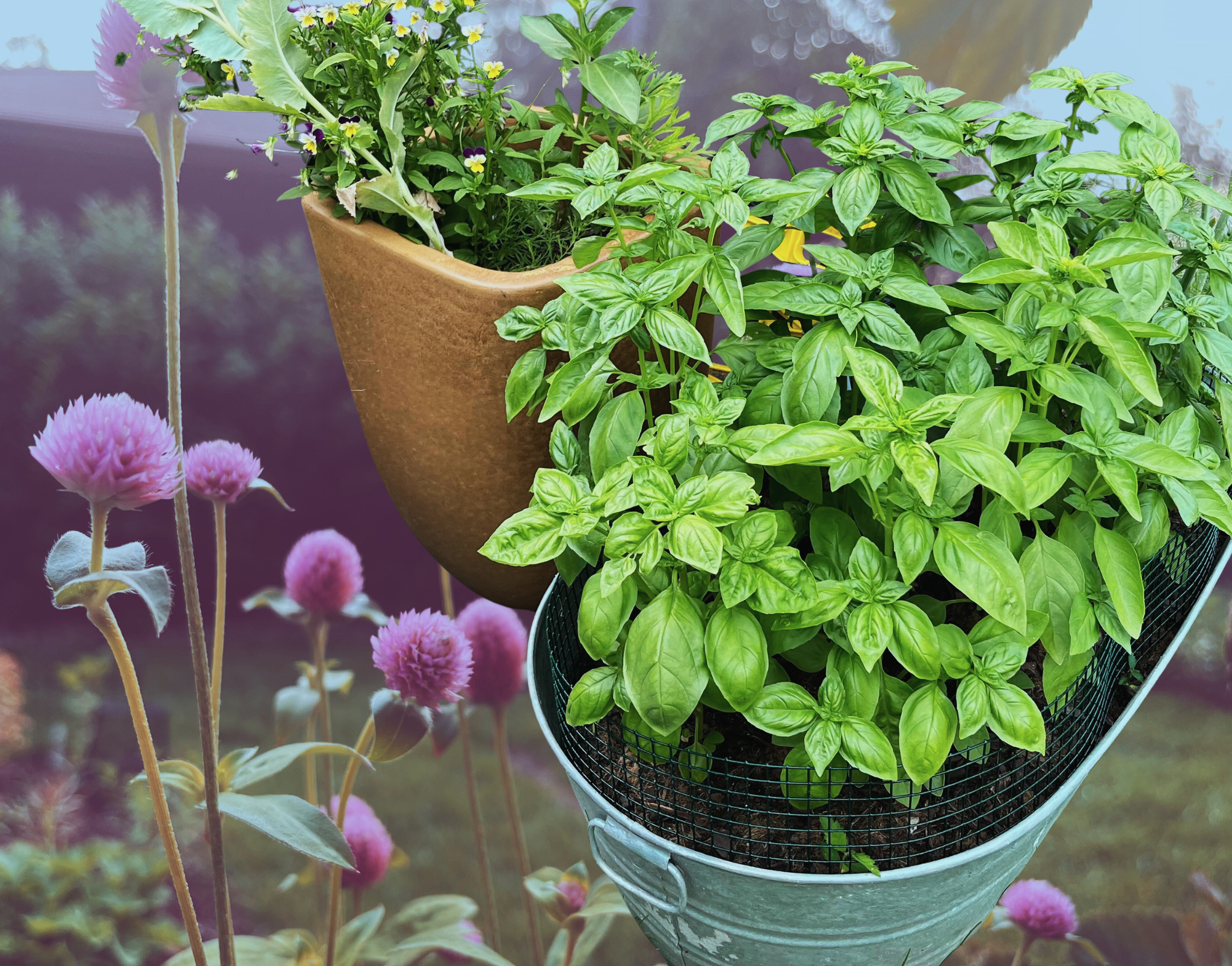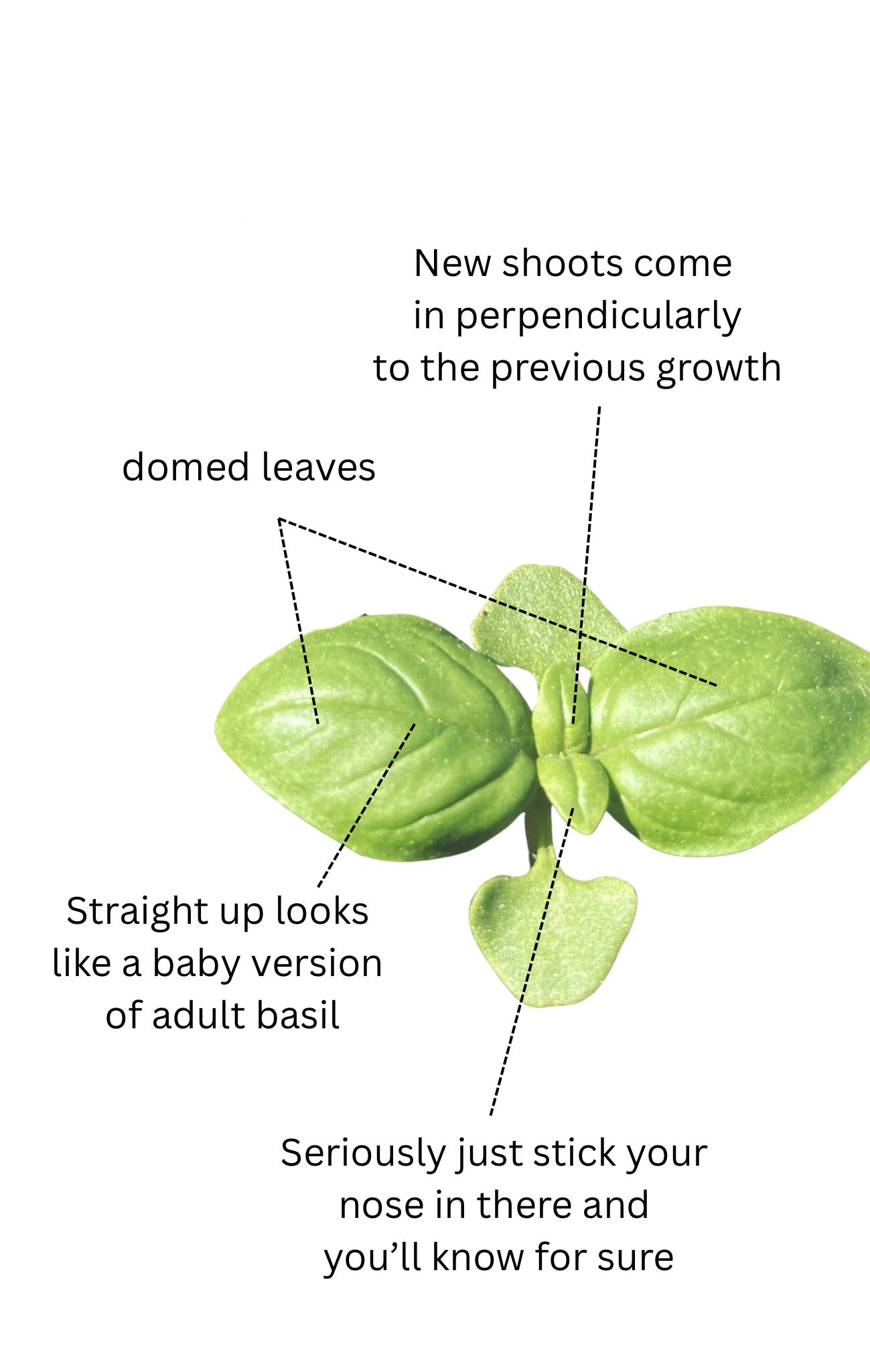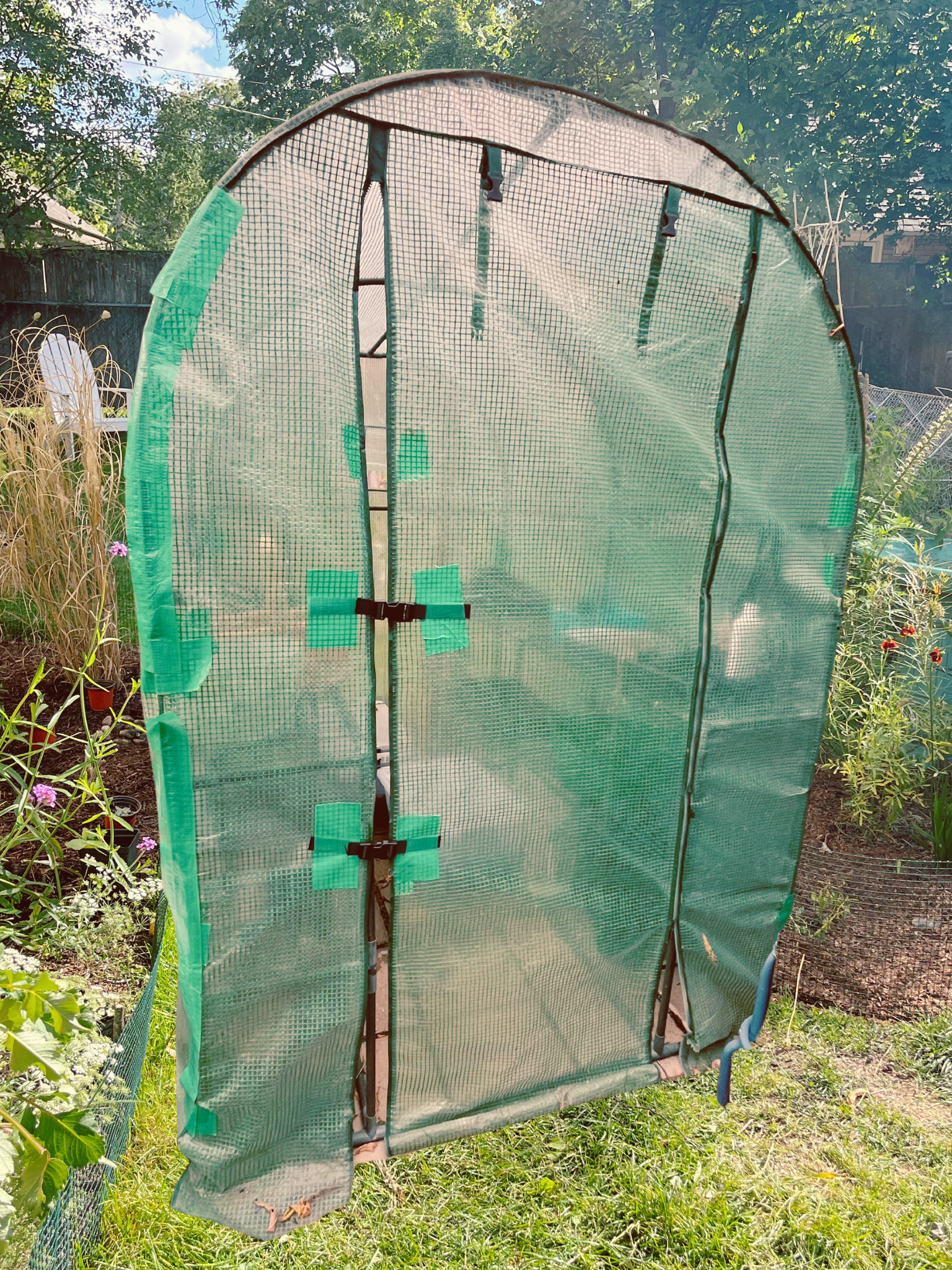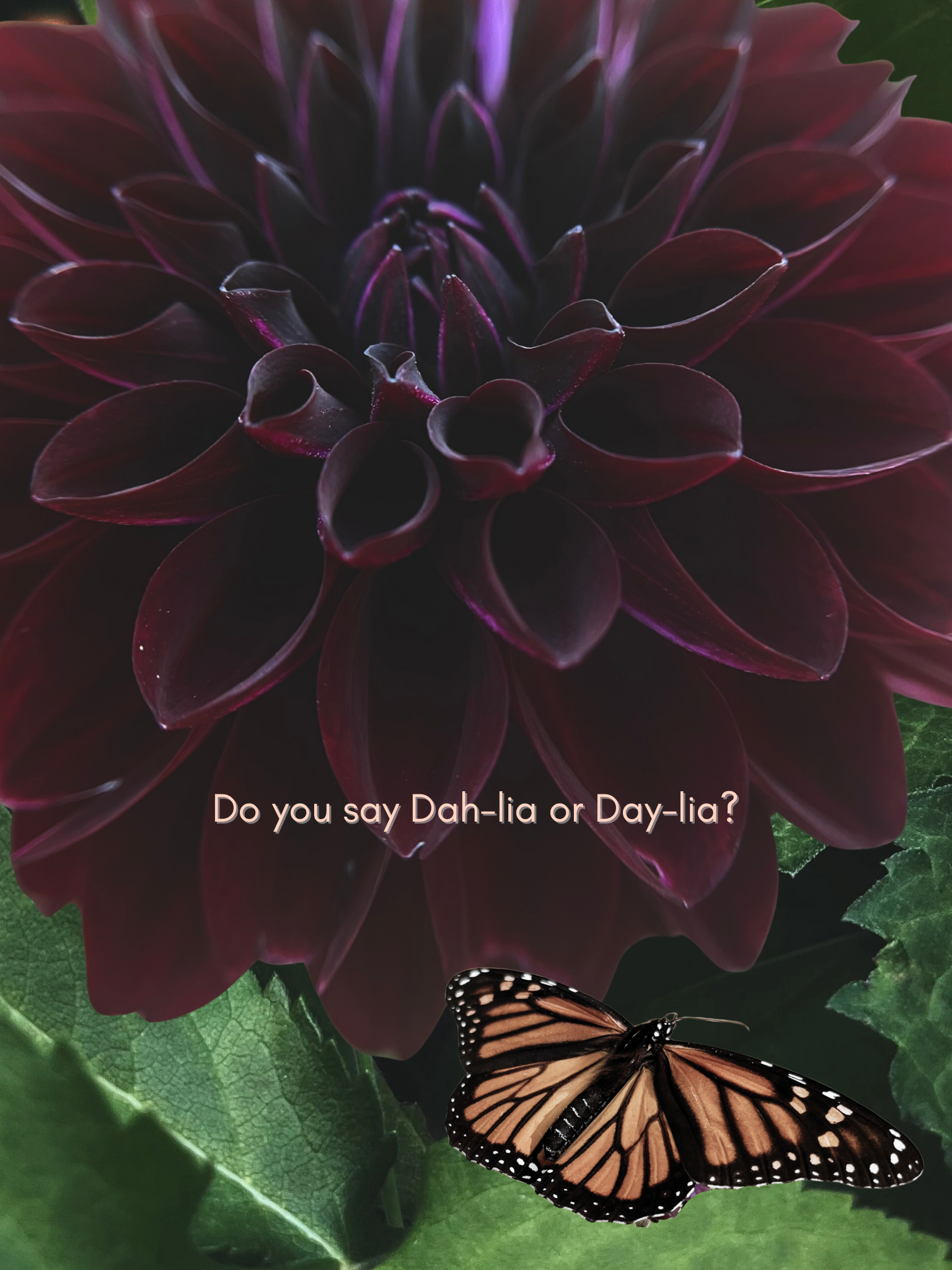Seedling ID #2: Genovese Basil. Sowing Difficulty: 2/10
Like Cilantro, Basil has some defining star characteristics. Keep in mind that I’ll be describing the quintessential Italian basil: Genovese. Things will look different for certain types of specialty Basils like Thai Basil or Dwarf Basil.
But Genovese: she starts off with two tiny Half-Dome-looking leaves mirroring each other (these are the seed leaves). Then she’ll grow into toddlerhood where her leaves will start to dome, new shoots will come in perpendicularly to previous shoots, and she’ll start to emit that unmistakable basil smell which will grow stronger as she grows into adulthood. Unlike Cilantro, Basil does not like cold. Once it hits about 50F, she’s ready to pull out her sweaters and drink hot cacao by the fire. She can be overwintered inside but may struggle because she does like a lot of sun.
Basil is 2/10 on the The Middle Garden’s Sowing Difficulty Meter (SDM). She’s not a 1 because she’s a bit more particular than say, Cilantro. But remains at a 2 because as long as we meet the right conditions (which is pretty easy), she’s good doer. I sow this boo boo in trays because the seeds are kinda small. Once she gets her first true leaves, I’ll prick out the seedlings and put them in bigger pots (more on that in a later post). Plant about ⅛-¼” deep, in peat-free seed soil, water well, put in full sun, make sure soil temps are at least 70F, and ensure good ventilation. Consider adding some drainage aid to the soil, like perlite or vermiculite. Basil needs water but the roots don’t like sitting in wet, so water every 2-4 days and preferably in the morning. Overnight tends to be colder, so she will do better if her roots have had the chance to dry up by the time night hits. Keep an eye on her, she’ll tell you if she needs more water. And remember this is a summer baby, so if overnight temps drop below 50F, consider putting her in a greenhouse or on a window sill.
To enjoy your basil harvest, cut not more than 1/4 of the leaves off the plant. She’ll grow more leaves for you to enjoy later. For this reason, planting multiple Basil plants is beneficial if you plan to use large quantities for pesto, say! As you harvest, be sure to get all those smells in, it probably helps prevent cancer.






